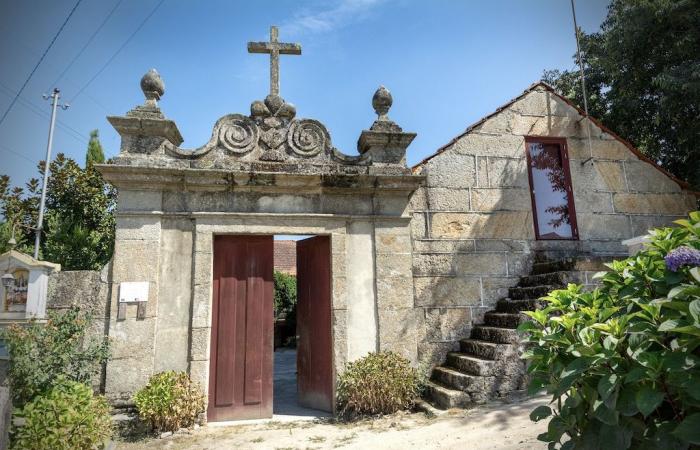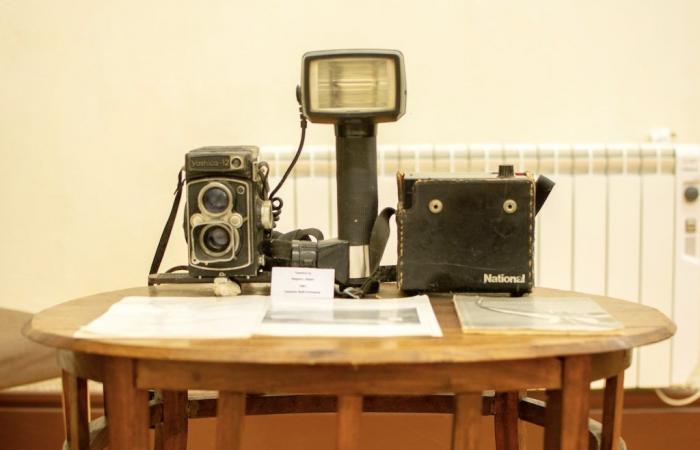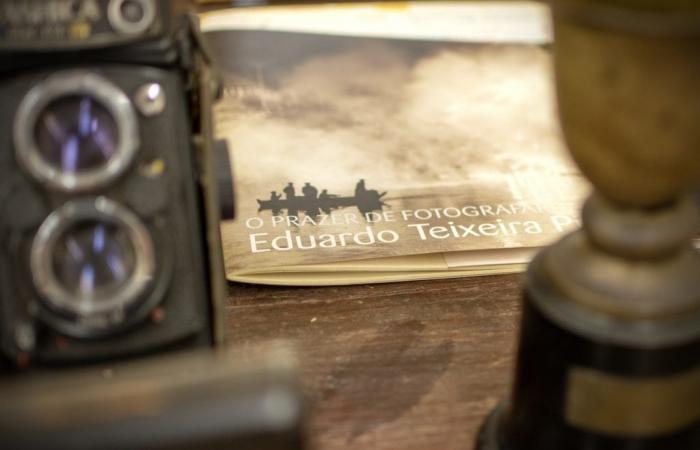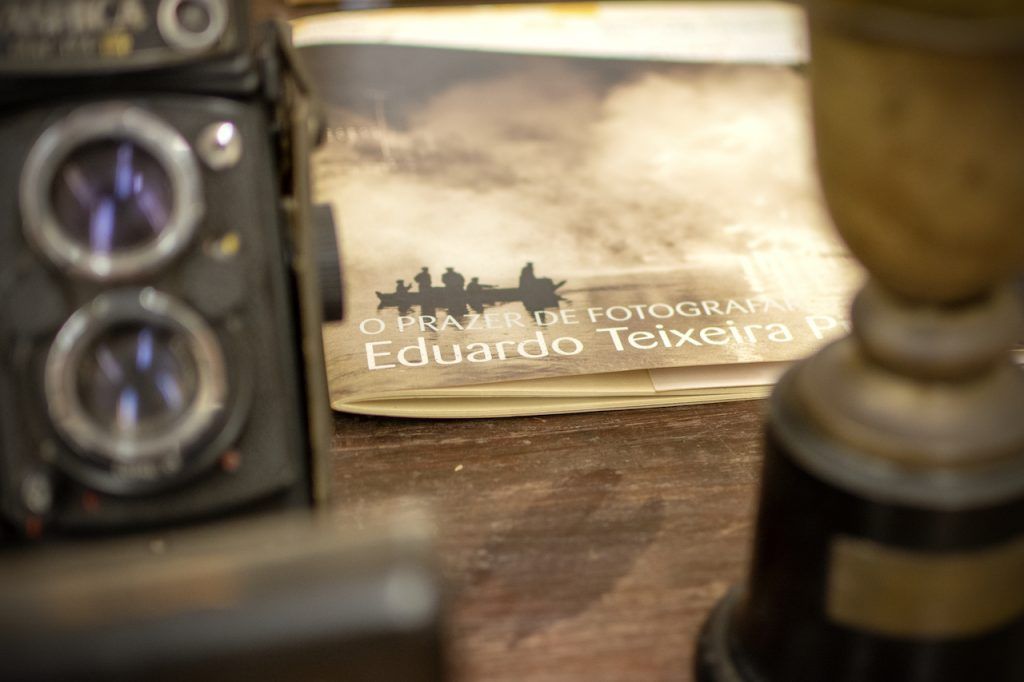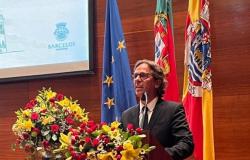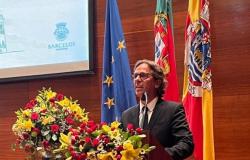In November 2017, on World Photography Day, the cultural space of Casa da Granja, in São Veríssimo, opened its doors to the public for the first time, under the management of the Association for the Creation of the Eduardo Teixeira Pinto Museum (ACMETP).
Once belonging to the family of Amadeo de Souza-Cardoso, the old manor house, restored by the Chamber of Amarante, has become, over the last six years, one of the main driving forces in the promotion of culture and art in Amarante.
In addition to the annual exhibition schedule, which includes an average of five to six exhibitions of photography, painting and visual arts, Casa da Granja houses a museum space dedicated to the work and life of Amarante photographer Eduardo Teixeira Pinto.
In mid-2019, one of the employees at Café Bar S. Gonçalo, in the center of Amarante, called Verónica Teixeira Pinto, telling her that there was someone there, “a Spaniard”, asking for her.
“At the time I didn’t think about anything special, and as I live nearby, I moved there”, Eduardo Teixeira Pinto’s daughter told AMARANTE MAGAZINE.
Already at the historic café, we learned that the man, who introduced himself as a photographer, intended to hold an exhibition at Casa da Granja, in São Veríssimo, a facility managed by Association for the Creation of the Eduardo Teixeira Pinto Museumof which Verónica is the president of the Board.
“It was agreed that he would send me samples of his work, which he did within a few days. When I opened the files, my mouth dropped open because it was only then that I realized that it was Plácido Lopez Rodriguez, one of the most renowned Spanish photographers. His exhibition, a set of excellent images from his travels through Nepal and India, was on display at Casa da Granja, at the beginning of 2020,” adds.
Verónica Pinto explains that the episode is illustrative of how Casa da Granja has grown in importance in promoting Culture in the municipality. Most of the artists who show their work there are invited by the management, but there is also a significant number who, like Plácido Lopez Rodriguez, propose to exhibit. “In fact, we receive proposals practically every day”he adds.
In addition to the range of temporary exhibitions and other activities, that cultural space houses the only permanent exhibition dedicated to the work and life of photographer Eduardo Teixeira Pinto who left, after his death in 2009, a vast estate valued at more than 300 thousand photographs .
It is also from here that the Association for the Creation of the Eduardo Teixeira Pinto Museum coordinates a series of traveling exhibitions of the photographer’s work, as well as holding the “Ilustre Amarantino” photography competition.
“Museums have to be dynamic, otherwise they stagnate and lose their attractiveness”
Verónica Teixeira Pinto explains that the contract she signed with the municipality for the management of Casa da Granja leaves it up to you to choose what you can promote there, particularly in terms of programming. “I didn’t want to create something stagnant, a mini-museum dedicated to just one theme or type of exhibition”he explains, defending a personal view that cultural facilities, particularly museums, have to be “dynamic and its diverse offer”.
In addition to the schedule of temporary exhibitions and the permanent installation, Casa da Granja has been the stage for book presentations and small concerts, among other activities, in its auditorium.
Anyone who attends a concert, for example, always ends up visiting the temporary exhibitions and the room dedicated to Eduardo Teixeira Pinto. “It’s almost like a complete package in terms of cultural experience”he says.
Throughout the year, on average, between five and six temporary exhibitions are held, which occupy the old stables of the manor house, part of the kitchen, one of the interior rooms and, if necessary, the chapel, in carefully organized and promoted exhibitions. mostly through social media.
“We have multipurpose equipment here, where we can organize exhibitions according to variables, such as the number of pieces or their size. It can be just one room, for example, large pieces go to the stables or we can extend the exhibition to the chapel. Only one thing never changes: the room dedicated to my father”, underlines. “In fact, if the temporary exhibition is small, we expand the exhibition dedicated to Eduardo Teixeira Pinto to the adjacent space or hold two exhibitions simultaneously”.
“The image of an institution, that first impression, is fundamental”
To carry out its mission, the association relies on little external support, says Verónica Pinto, highlighting, however, the “precious work” that Amarantino designer Carlos Galo has done in the promotional area.
“In this sector, the image that an institution projects, particularly when announcing a new exhibition, is very important and a factor that I sometimes see overlooked in other institutions. The work of Carlos Gallo and his team has been very important for us. And this is visible in the promotional posters, the leaflets, the invitations and the tarpaulins that it produces for Casa da Granja”.
Casa da Granja is currently showing an exhibition of photography by António Pinto, opening, on April 6, an exhibition by Wanderson Alves. This will be followed by an exhibition by Luís Carvalho, Portuguese photographer and editor of the RTP 3 program “Fotobox”; Brazilian photographer Wanderson Alves; the painter Aparício Farinha; photographer Júlio de Matos and painter Cabral Pinto.
Note: this piece was originally published in the paper edition of AMARANTE MAGAZINE number 38 (Winter 2024).

